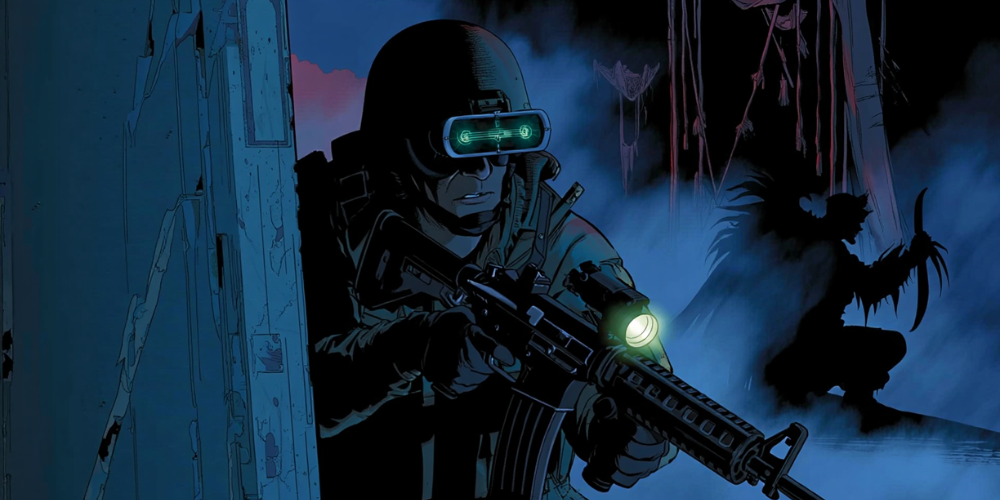Call of Duty’s next Black Ops nods to DC’s fear maestro in style
2025-11-17

Fans of Treyarch’s mind-bending subseries have latched onto a clever throughline in the newest teases: the next Black Ops seems to pay homage to a certain DC nemesis whose entire brand is weaponized fear. Rather than promising a crossover cameo, the signals suggest an ethos—psychological warfare, sensory doubt, and paranoia as design pillars. It tracks with the series’ history of fractured memory, subliminal triggers, and interrogations that blur truth until the answers feel slippery. Community chatter points to that villain’s signature tactics as a practical lens: fear introduced not as sudden jolts alone, but as a systemic pressure that bends perception and pushes characters toward rash choices. In other words, the team appears to be honoring the archetype, not borrowing the mask. That approach is smart gaming literacy; it embraces a shared pop-culture reference to clarify intent while giving designers room to build original systems. Timeline speculation pegs the campaign near the end of the twentieth century, where broadcast narratives, covert psyops, and camcorder-era surveillance can plausibly intersect with tactics that seed doubt. That backdrop lets the studio stage mind games without losing the grounded tone that gives Black Ops its bite, setting expectations for sequences where the real hazard is whether your senses can be trusted at all.
Translating fear into play loops means manipulating information, rhythm, and agency rather than simply raising damage numbers. Expect campaign moments that distort the usual reading of space: corridors that subtly redraw, dioramas that only stabilize when you verify intel, and enemy silhouettes that resolve correctly only after you secure context. Visual craft can lean on heat-haze warping, shifting grain, and color filtering that ebbs with your composure stat, while audio drapes scenes in binaural whispers, occluded reverb tails, and distant radio chatter that tempts you into bad routes. Haptics and controller cues can underline the effect with pulse-aligned rumble, resistance spikes on triggers to simulate breath control, and a deliberate delay when you try to snap decisions under pressure. Crucially, the game can keep tension fair by pairing every hallucination with one or more anchors—compasses, task lights, and partner callouts that cut through the fog if you are paying attention. That balance maintains agency: you feel destabilized but never cheated, and the puzzle is learning which sensory channel to trust in the moment. Done right, the fear theme becomes a readable ruleset, not just a visual prank.
If the creative north star is a DC fear icon, the key is restraint and empathy. Real anxiety is messy; interactive anxiety should be artfully bounded. That means content calibration: optional intensity sliders for distortion, toggles for rapid flashes, and clear messaging before set pieces that lean hard into disorientation. Accessibility should be a first-class citizen, not an afterthought—text alternatives for audio cues, color-safe palettes, and assists that dampen the harshest sway without defanging the premise. Narrative framing matters too. Black Ops has always worked best when it treats mind manipulation as theme and critique, not glamorization. Leaning into debriefs, after-action reflections, and multiple perspectives can keep the story grounded in human cost and accountability. Fear, in this context, becomes a tool to interrogate unreliable power structures and the fallibility of memory, not just a trick to make players miss a shot. That distinction is why the homage reads as respectful rather than derivative: the villain’s influence shapes the scaffolding, while the studio’s voice decides what it means.
Multiplayer is where homage risks colliding with fairness, so design has to be precise. Information warfare can thrive without crossing into frustration: think field upgrades that emit decoy footfalls, optics that overexpose false targets until you secure a scan, or tactical gear that scrambles mini-maps in a small radius while revealing your position if overused. Each misdirection should have a crisp counter—audio dampeners, clarity perks that filter fake pings, and gadgets that re-stabilize your HUD for your squad. Map craft can carry a lot of the mood with layered sightlines, ducting and vents that color footsteps differently, and lighting that breathes without ever hiding silhouettes beyond readability standards. Scorestreaks might tilt toward intel duels—short-window sweeps, counter-sweeps, and decoys that risk backfiring if timed poorly—pushing teams to mind the info economy as much as their aim. Training ranges and private match toggles can teach the taxonomy of tricks quickly, preserving the thrill of uncertainty in live matches while ensuring new players aren’t lost in the haze. It’s homage as gameplay grammar: mislead, detect, adapt.
Conclusion
The throughline is clear: by saluting an iconic DC embodiment of fear, Black Ops 7 signals a renewed commitment to psychological play—less about louder explosions, more about choice under doubt. If Treyarch threads the needle, we’ll get a campaign that uses sensory instability to question truth, and a multiplayer suite that turns misinformation into a strategic dance with transparent counters. That kind of design respects both sides of the audience: the lore-minded player who wants subtext and the competitive player who wants clean, testable rules. No direct crossover is required; the homage works precisely because it’s a conversation with an idea, not a licensing flex. As reveals roll out, watch for the tells: tools that stabilize perception, mission briefs that warn of deceptive environments, and systems that reward composure. Fear, when framed as a mechanic rather than a gimmick, can refresh a long-running series—carving out new stakes without abandoning the craft that made Black Ops a byword for intrigue.






